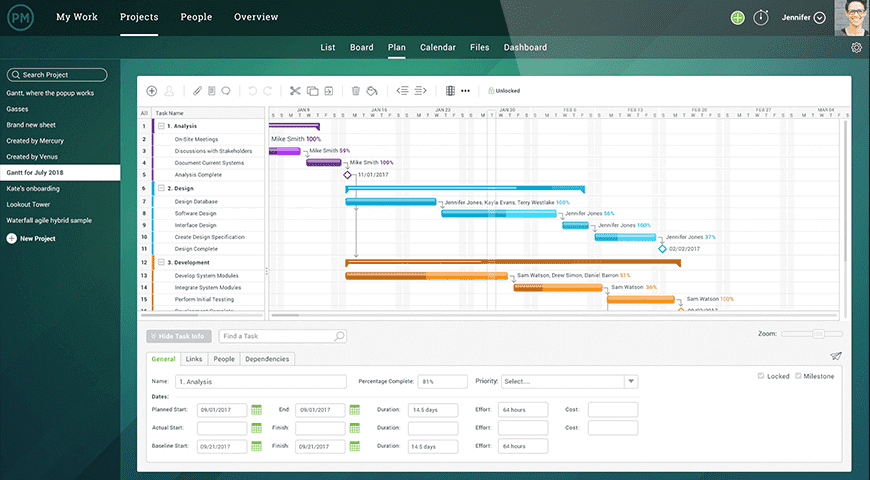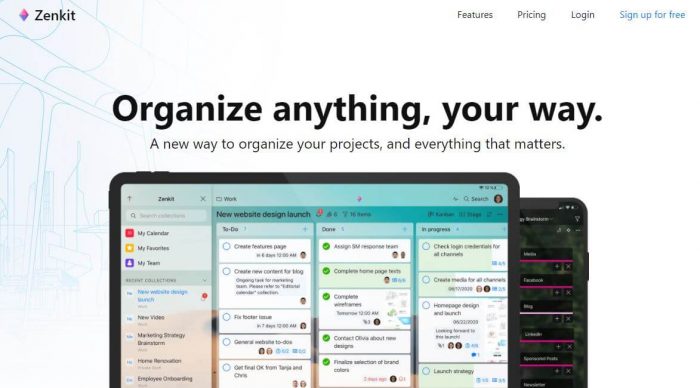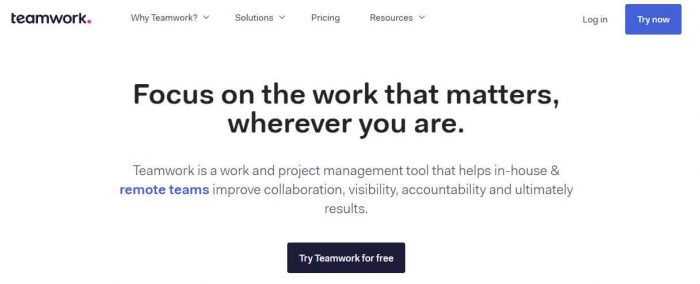- Free Project Management Software
- Microsoft Project Alternative For Macheavenlyboard Research
- Microsoft Project Substitute
Table of content
Dec 28, 2020 Wrike is a Cloud-based collaboration and project management tool. It is one of the best ms project alternatives which helps you to scale across teams in any business. This free microsoft project alternative tool allows to set priorities and align your team to work faster and smarter.
What is Microsoft Project Management and Why Would You Want an Alternative?
How Much Does Microsoft Project Cost?
The Top Alternatives to Microsoft Project
Millennials represent 35% of the workforce. They are now the largest generation of workers today. In a few years, the first GenZ workers will show up asking for interviews.
- When seeking out Microsoft Project alternatives, industries such as IT, research and development, and marketing have found Project Insight to be a strong fit for their project management needs. The dashboard offers easy access to comment, update, and sort tasks as necessary.
- Trello is known for its Kanban-style message boards that let you organize and group tasks, add people, and manage project or task statuses. You can tag team members to assign them tasks or to draw their attention to specific comments on a project. Trello captures each task as a card.
What does this mean for you? The software you’ve used for years will be foreign and difficult to learn.
You entered the workforce at a time when Excel and Microsoft Outlook were the project management tools in business. Sifting through complicated drop-down menus was the norm.
You might be comfortable with a software suite like Microsoft Project. Your millennial and GenZ employees won’t. And the easier it is for your team to learn project management software, the more productive they’ll be.
It’s time to look for a Microsoft Project alternative. We’ve picked out the top five so you can avoid wasting time on tiresome research. Scroll on to find out top picks.
What is Microsoft Project Management and Why Would You Want an Alternative?
Microsoft Project is a powerful piece of software. It’s tools empower teams to find the optimal project schedules and the right solutions for workload distribution.
With fully customizable Gantt charts, task tracking, budgeting toolkits, etc, you’ll be able to keep track of progress and deliverables. If you’re an experienced project manager, this software suite will scratch your need for full variety and control.
So, why would you need an alternative? What’s wrong with a powerful project management tool made by one of the biggest tech companies in the world?
Poor user interface is the answer.
If you’ve been a loyal user of Windows and Microsoft’s productivity tools, you’ll understand the frustration. Options and menus hidden deep within drop-down menus. When you think you’ve mastered the software, a new need arises and you’re once again hunting for what you want.
Free Project Management Software
Microsoft Project is no different. Tools and shortcuts are all in a bar at the top. On the left is the spreadsheet with task and resource data. On the right is an interactive visualized schedule.
On top of all this, there is no mobile app. A puzzling choice considering that Microsoft makes tablet PCs. It’s standard practice to convert your software into a mobile app.
How Much Does Microsoft Project Cost?
While you can host your own server from which to run Microsoft Project, that’s not the easiest option. Office360 allows users to add Microsoft Project to their subscription.
The first tier, Project Plan 1, costs $10 per user per month and it does not include a desktop client. You must use your browser to access the software. It lacks a few tools and functions like the ability to assign resources to specific tasks.
The second tier, Project Plan 3 (don’t ask because we don’t know what happened to Plan 2 either), is $30.00 per user per month. With Plan 3, you can download a desktop client. Here you’ll be able to access reporting and timesheet functions.
Project Plan 5 is $55.00 per user per month. This includes project proposals and certain business metrics.
The Top Alternatives to Microsoft Project
Maybe you’re hiring more young workers or maybe you’re just fed up with drop-down menus. Whatever the reason you’re looking for a Microsoft Project alternative, the following will fill your needs.
1. Bitrix24
Microsoft Project pales in comparison to Bitrix24. Granted, Project includes useful tools similar to Bitrix24’s Gantt charts, tracking tools, Kanban visual aids, and tracking tools. It doesn’t match Bitrix24’s sleek design.
When you log in to Bitrix24, you can quickly interface with the tools you need without drowning in drop-down menus. Everything you need sits comfortably in the icon tray on the left or tabulated across the top. You’ll never be siloed into a tool and feel like you need to crawl your way back out to use another.
You’re constantly growing your business. You need a project management suite that grows with you. No other software solution scales this well to your business’ size.
When you first sign on with your small team, you might not need all the CRM tools available. But down the road, you’ll be grateful Bitrix24 allows you to track and balance hundreds or thousands of clients all from one location.
If you feel overwhelmed by the sheer number of tools available, fear not. As you or your team need a tool, you can utilize Bitrix24’s thorough training videos. Bring your team online through either an organized class time or allow them to learn the tool on their own time.
How Much is Bitrix24?
Are you a small team with less than twelve users? Then Bitrix24 is a free alternative to Microsoft Project. And even if you have a slightly larger team, ask yourself, does everyone need access?
If you answered “yes”, then the Standard version is the version you need. It gives you unlimited access for an unlimited number of users for only $99 a month. That’s right. No matter how many users you want, it’s still $99 a month.

The Standard version allows 100 GB of storage and allows you to use your own logo.
The Standard version does lack some project management features. If you need those features, you can upgrade to the Professional Plan. This includes unlimited storage, meeting and briefing tools, time management tools, records management tools, and the ability to use your own domain name.
2. Wrike
If you’re looking for ease of use, Wrike is your project management tool. It’s fairly easy to learn and you can quickly start tracking your work.
There’s a reason Wrike is our number two on this list. It boasts a clean and user-friendly interface. And what’s more, your dashboard is customizable within the software. This allows you to tailor the software experience to your team’s needs.
Widgets add another layer of customizability. These allow you to keep certain features to the forefront including documents, notes, and certain other resources.
If you need a visualization, look at Asana or Slack. Imagine a three-panel interface. A list of projects on the left when you can start what you want for easy access. Once you click on a project, it pops up in the second pane where tasks fold out before you. Lastly, if you click on a task, the third panel displays your task details.
Wrike isn’t all roses and rainbows, however. If you wanted a robust communications piece, look elsewhere. Wrike does not include video, voice, or live chat.
The software relies on a comment-posting system. You can comment on specific tasks or reply to comments and tag other team members.
The Price of Wrike
Wrike does have a free plan option but it’s an unusual package setup compared to other software suites. It’s free for teams of up to five. Sounds small, doesn’t it? But then you notice that an unlimited number of collaborators can sign on.
A collaborator is someone who can view the project, but can’t edit or comment on it. Sounds great, until you realize that Gantt charts aren’t included. Neither is time tracking or dashboard customization (what makes this software a decent alternative). And you’re looking at only 2GB of storage.

If you want to use a Gantt chart, then you’ll have to upgrade to the Professional plan. This will cost you $9.80 per user per month. They allow volume discounts on packages of 5, 10, or 15 users. This plan gives you Gantt charts, time tracking, sub-tasks, and dashboard customization.

The majority of Wrike’s features are available in their business plan. This costs 24.80 per user per month. Some fun features in this plan include report templates, time tracking, task approvals, and Salesforce integration.
3. Monday.com
What do you think when you hear the name “dapulse”? Certainly not collaboration software. That’s why in 2017, Israeli startup dapulse changed their name to Monday.com.
No matter how boring and safe the new name, Monday.com is a decent alternative to Microsoft Project. They’ve branded the software as “not a project management tool” but it can be used as such. They’ve simplified down from what you might expect from most tools and created an easy and streamlined experience.
Like Microsoft Project, the interface is a lot like a spreadsheet. Unlike Project, it’s intuitive and easy to learn. Don’t like using a spreadsheet-like interface? That’s fine. Monday.com includes list views, project maps, or a Kanban board to help give an overview of your projects.

Users can upload and attach files to cards, mention teammates, etc. You can build summary charts of your progress and plans and then export them for others to see.
But if you’re looking for a traditional project management toolset, you won’t find it here. Instead of Gantt charts, you’ll find “timelines.” This is a slightly fancier way to display projects visually.
How Much Does Monday.com Cost?
Sadly, there is no free plan for Monday.com. But the Basic membership isn’t all too expensive at $49 a month for up to ten users (If you want more users, you can pay for more users after ten). You get 5GB of storage with this membership and you’re able to access the visual workflows.
You won’t be able to store activity logs longer than one week with the Basic membership. So, if you need to keep records longer than a week, you should upgrade to the Standard membership.
The Standard membership will cost you $79 per month for up to ten people. If you want the full experience of Monday.com, then you’ll want this membership tier. It includes the timeline’s Gantt chart-like feature you can’t get with the Basic membership.
The Pro membership costs $119 per month for up to ten users. This membership allows integrations with up to 25,000 other platforms. And the biggest advantage of the Pro Membership is that it comes with unlimited storage space. If you work with large multimedia files, go Pro.
4. Zoho Projects
Are you looking for a fairly well-rounded project management experience? Zoho Projects might be your alternative. It has the feel of a Microsoft product and the simplicity of an Etch-A-Sketch.
Zoho Projects features a large array of Gantt chart features. It includes a drag and drop mechanic even a child could learn how to navigate. It allows all four dependencies and includes baseline and critical path features.
It includes vital project management features such as time tracking, task management, and resource utilization. If you want to keep track of milestones, you can do that too by setting time goals. Task management tools include custom statuses and fields, reminders, Kanban boards, and task recurrence.
Need to track resource and employee utilization? This is something unique to Zoho Projects. You can easily figure out who is under-utilized, who is overworked, and who is unavailable through their simple seesaws.
How Much Does Zoho Projects Cost?
If your team includes five people or less, then you’re in luck. Zoho Projects can be free for you and your team. Unfortunately, you can only manage two projects at once. Otherwise, the free version is a great deal!
For only $25 per month, the Standard plan will give you everything included in the free plan and allow you up to ten members with ten projects. The free plan didn’t include time-tracking, but the Standard plan does.
The Express package is $50 per month and allows unlimited projects for up to 15 people. After 15 people you can pay an extra $4 per month to add users up to 100.
Microsoft Project Alternative For Macheavenlyboard Research
The Premium plan is $100 a month and allows teams of up to 20. This adds the four task dependencies, task rollups, and business hour tracking along with a bunch of other features.
And for $150 a month, you can opt-in to the Enterprise package. That includes 25 users with added users costing $6 per month up to 5000. You can upload files as large as 120 GB, use a custom domain, and more.
Your Employees Will Appreciate a Microsoft Project Alternative like Bitrix24
If you’re looking for a Microsoft Project alternative, then consider Bitrix24. It includes the robust and simple-to-use interface your younger employees will appreciate. The same can’t be said for Microsoft Project where drop-down menus proliferate and silo users into ever deeper pits of frustration.
If you haven’t tried Bitrix24 and delved into its vast project management toolbox, then you’re missing out. It’s simple to download and easy to get started. Jump into Bitrix24 today.
Explore popular project management software that makes tracking project statuses, collaboration, and task management easier.
Microsoft Projects is a popular project management platform. In Capterra’s 2018 Top 20 Most Popular Project Management Software list, it scored 75 out of 100, placing it at the top of the list.
But a high score doesn’t necessarily mean Microsoft Projects is the right choice for every user. Reviewers on Capterra mention that it can have a steep learning curve. You may want to look at simpler alternatives if getting started quickly is a priority.
Selection criteria
We’ve analyzed data on more than 600 project management tools on Capterra and used the below criteria to identify the Microsoft Project alternatives we’re featuring here.
- Core project management features: The product must offer the core project management features: task management, collaboration, and project tracking.
- At least 20 user reviews published on Capterra in the past two years: This helps ensure there are enough reviews to analyze the pros and cons.
- Likelihood to recommend: Theproduct should have a minimum average recommendation rating of 8 out of 10 on Capterra.
- Features and functionality rating: The product should have an average functionality rating of at least 4 out of 5 on Capterra.
5 Best Microsoft Project Alternatives for Project Management
1. Asana: Work management platform for teams of all sizes
| Likelihood to recommend: 8.4/10 Features & functionality rating: 4.3/5 Reviews: 7,133+ |
Asana allows you to create multiple tasks and subtasks within different projects and monitor their progress. Users can comment on the tasks, share documents, assign tasks to team members, and track deadlines.
The tool’s dashboard provides an overview of different project statuses and lets you create project plans that can be viewed as flowcharts, timelines, and graphs. Asana offers integrations with more than 100 other tools, such as Dropbox, Zapier, and Microsoft Office 365.
Pros | Cons |
|---|---|
| Users praise the software’s open APIs, downloadable conversation history, and predefined project templates. | Reviewers mention that some features, such as dashboards, take time to master and require many input values. |
| Users find the interface easy to navigate. | Some users mention getting overwhelmed by too many automated email notifications. |
How much does Asana cost? | |
| Asana’s Basic version is free and accommodates up to 15 users. The Premium version is priced at $9.99 per user, per month, and the Business version costs $19.99 per user, per month. | |
Product development roadmap in Asana (Source)
2. Basecamp: Project management tool with to-do lists to manage tasks
| Likelihood to recommend: 8.0/10 Features & functionality rating: 4.2/5 Reviews: 10,033+ |
Basecamp offers features such as message boards, to-do lists, chat tools, and shared calendars. It allows you to embed files or images into your messages and track project conversations on a single page.
Basecamp also integrates with third-party apps such as G-Suite, iCal, and Outlook.
Pros | Cons |
|---|---|
| Users appreciate the ability to send notifications to multiple people with a single click. | Users mention that Basecamp’s price makes it unaffordable for most freelancers and small teams. |
| Reviewers say that the software is easy-to-use and learn. | Some users feel that Basecamp should incorporate more visual options, such as Gantt charts. |
How much does Basecamp cost? | |
| Basecamp has a single $99 per month plan that supports unlimited users and projects. Teachers and students get free Basecamp accounts while discounts are available for nonprofits. | |
“Hill chart” feature in Basecamp helps track project progress (Source)
3. Monday.com: Team management software that helps improve collaboration
| Likelihood to recommend: 8.7/10 Features & functionality rating: 4.4/5 Reviews: 1,789+ |
Formerly dapulse, monday.com is a tool that helps manage teams and tasks. It provides visual charts to track project statuses, sales pipelines, HR tasks, etc. Monday.com also offers predefined project dashboards and workflow templates. You can invite new members, tag them, and track all your project conversations.
The tool integrates with other systems such as MS Excel, Trello, Asana, and Basecamp, which facilitates importing project data onto it.
Pros | Cons |
|---|---|
| Reviewers like that the tool allows them to share select project plans with clients. | Users feel that the vendor could improve monday.com’s design and visualization capabilities. |
| Users mention that the software is easy to set up and configure. | The pricing is not on a per user basis, but only for groups of two to five users, which many reviewers noted as inconvenient and expensive. |
How much does monday.com cost? | |
| Monday.com has Basic, Standard, Pro, and Enterprise versions. The Basic version costs $15 per month, the Standard version $25 per month, and the Pro version $37 per month (all prices are for two users; interested buyers must contact vendor for the Enterprise plan cost). | |
Task management in monday.com (Source)
4. Trello: Project management tool with Kanban-style boards
| Likelihood to recommend: 8.5/10 Features & functionality rating: 4.3/5 Reviews: 12,100+ |
Trello is known for its Kanban-style message boards that let you organize and group tasks, add people, and manage project or task statuses. You can tag team members to assign them tasks or to draw their attention to specific comments on a project.
Trello captures each task as a card. You create cards directly on the app or convert email requests to cards using Trello’s email integration capabilities. Trello’s “Power-Up” feature helps it connect with a number of other applications including Slack, Todoist, and Evernote.
Pros | Cons |
|---|---|
| Users mention that the tool’s drag-and-drop interface makes it easy-to-use. | According to some reviewers, Trello is slow to load when there are many boards. |
| Users appreciate Trello’s integration with a wide range of other apps, such as calendars, maps, file storage tools, and videoconferencing apps. | Some users mention that adding advanced features, such as the ability to create recurring tasks, would improve the product’s value. |
How much does Trello cost? | |
| Trello offers a free version as well as two paid versions—Business Class ($9.99 per user per month) and Enterprise ($20.83 per user per month). | |
Kanban boards in Trello (Source)
5. Wrike: Online project management software with Gantt charts
| Likelihood to recommend: 8.0/10 Features & functionality rating: 4.2/5 Reviews: 1,448+ |
Wrike allows you to set project goals, assign resources, and track project progress. It offers interactive Gantt charts to track and optimize project planning.
Wrike’s drag-and-drop interface lets you quickly reprioritize projects and manage resources. You can create customized templates for different workflows and build iteration processes to plan sprints and manage backlogs. Wrike also integrates with third-party tools such as Tableau, Box, and Salesforce.
Pros | Cons |
|---|---|
| Reviewers mention that the tool helps them better organize tasks and assign teams/users to different tasks. | Some users mention that the software takes a long time to set up and has a steep learning curve. |
| Reviewers appreciate Wrike’s quick customer support. | Users want to see an expanded ability to customize project status terminologies, set deadlines, and search for different tasks. |
How much does Wrike cost? | |
| Wrike’s Professional version costs $9.80 per user per month and the Business version costs $24.80 per user per month. Wrike also has a free version that supports up to five users. | |
Gantt charts in Wrike (Source)
How to choose the right Microsoft Project alternative
How do you go about choosing the right project management software for your business? Here’re some tips:
- Shortlist products based on their features and pricing: Eliminate solutions that fall outside your budget range and don’t offer features that your business needs.
- Demo the products: Explore the free versions or check out free trials to get firsthand experience with how the software works and its limitations.
- Read Capterra reviews: Capterra lists software reviews written by real users. Read the reviews to understand what your peers have to say about using the software.
To expand your search scope beyond these five alternatives, visit our comprehensive project management software directory.
In the comments section below, let us and other readers know which project management tools you’re using (if any), what’s working well for you, and what’s not.
For more, scroll through these articles on project management: |
Microsoft Project Substitute
Looking for Project Management software? Check out Capterra's list of the best Project Management software solutions.
